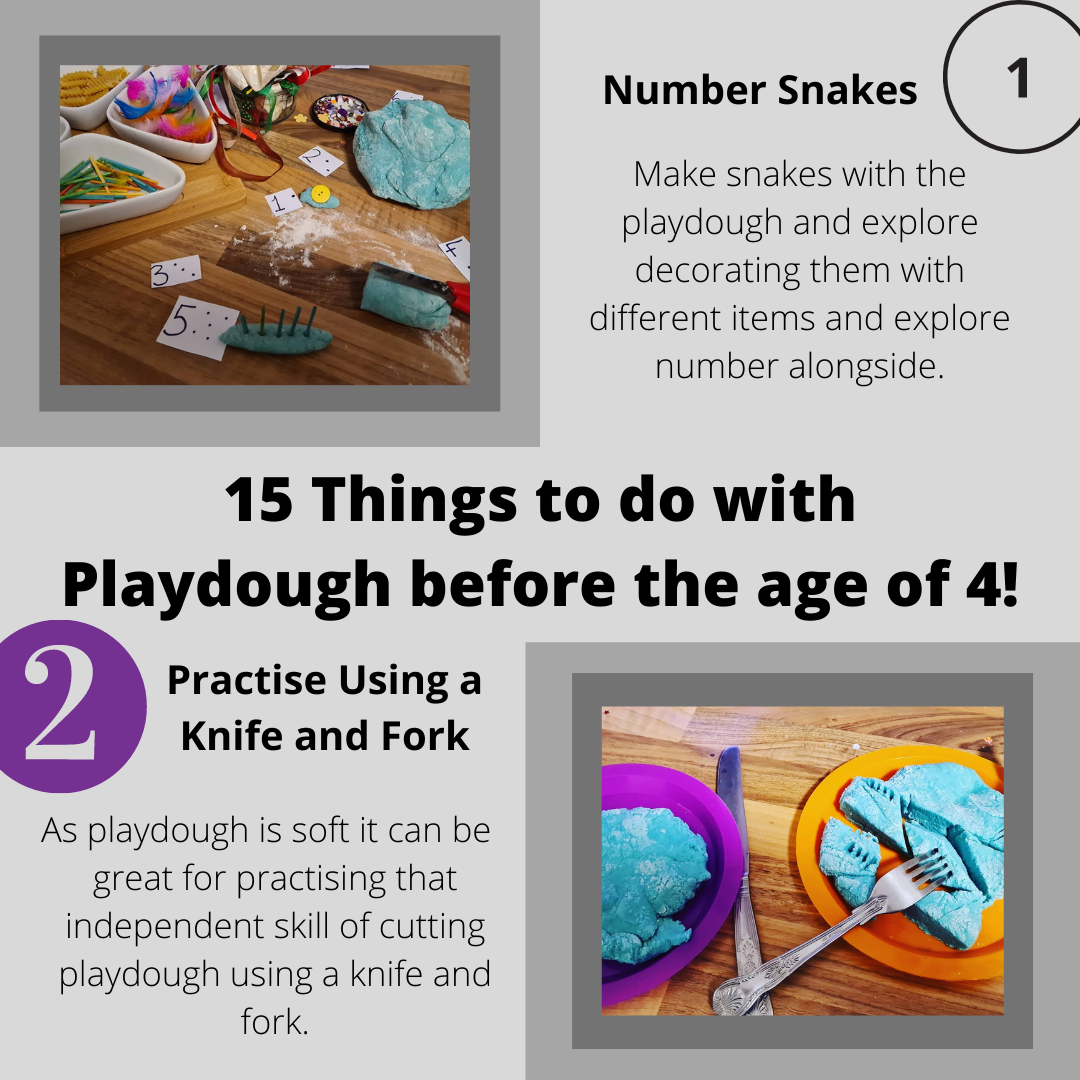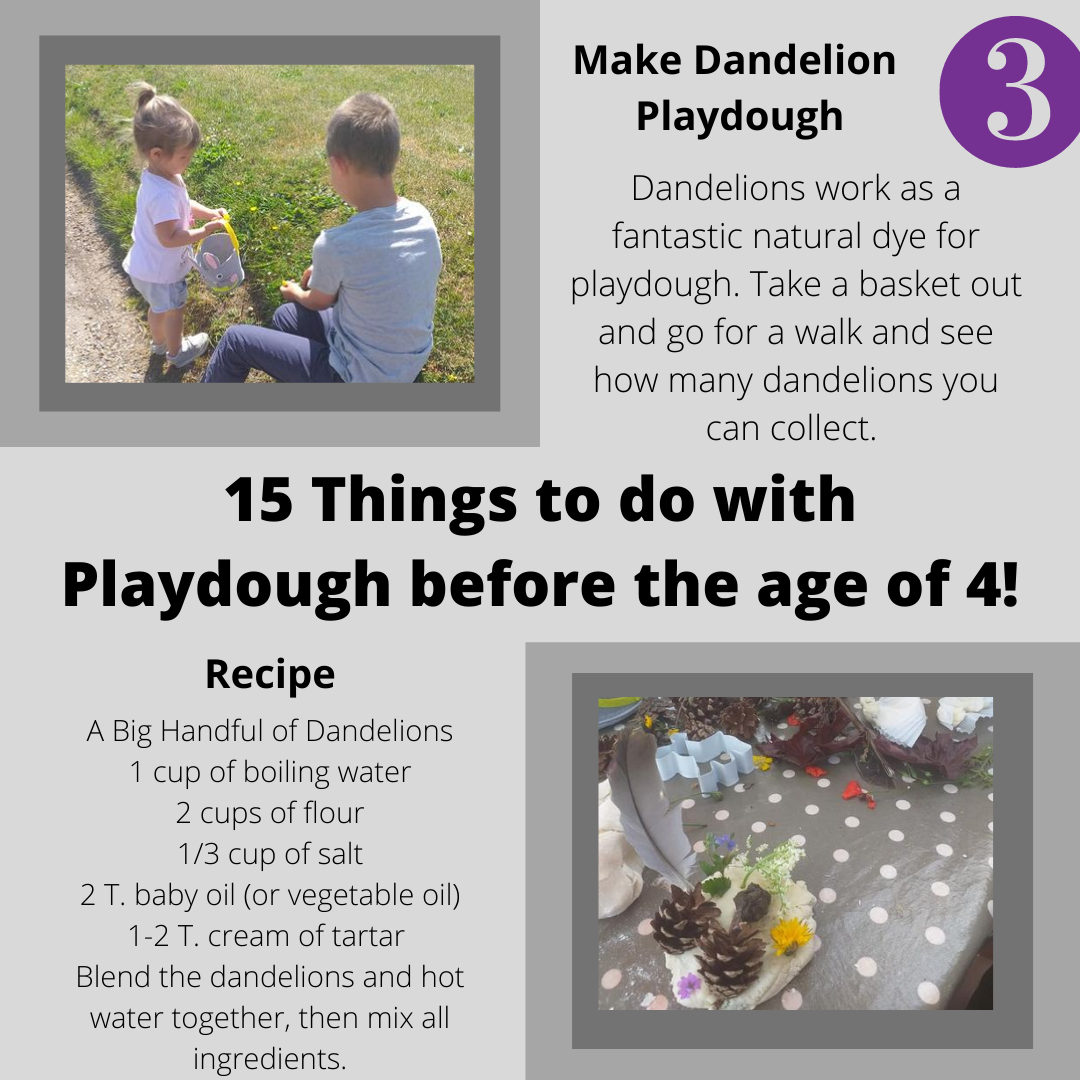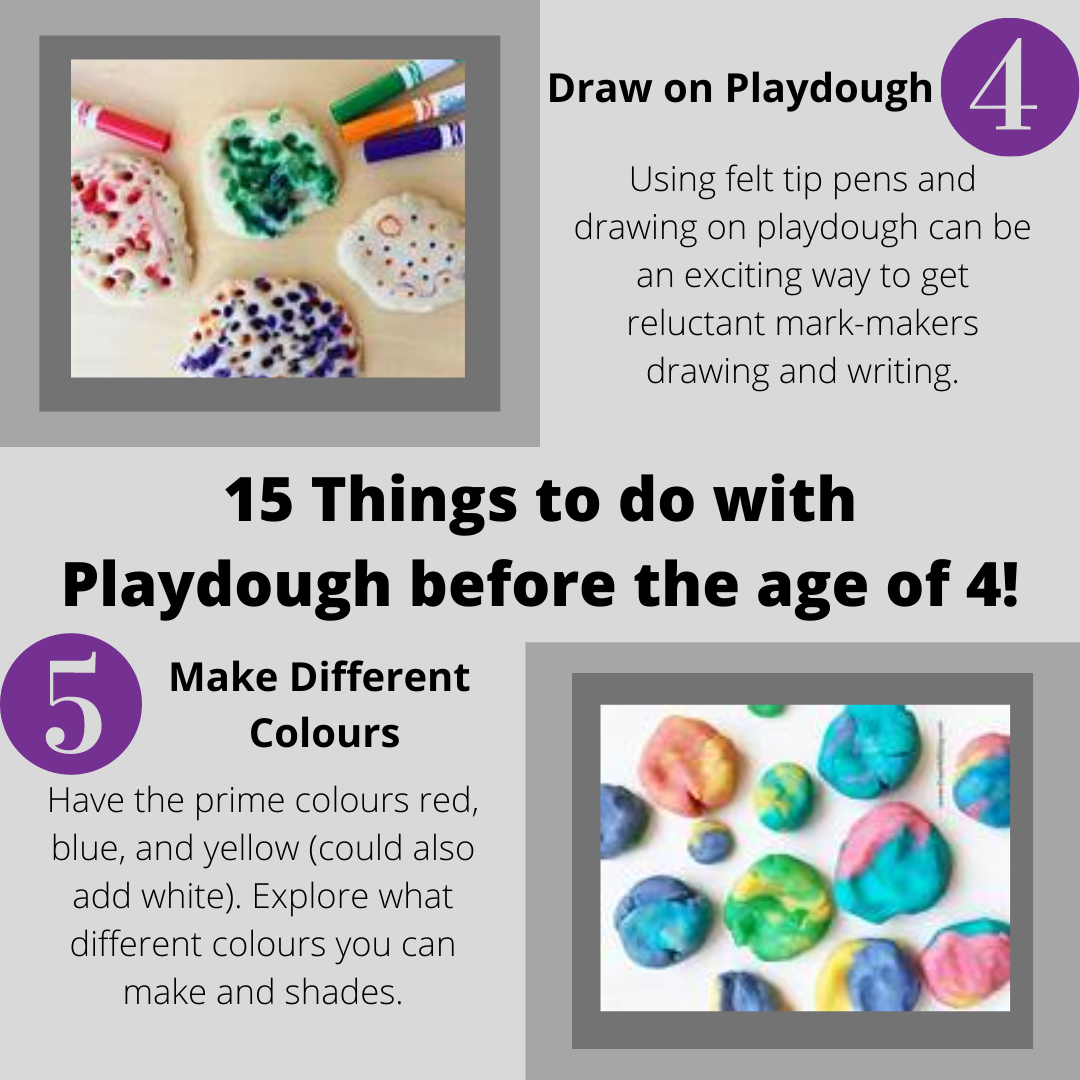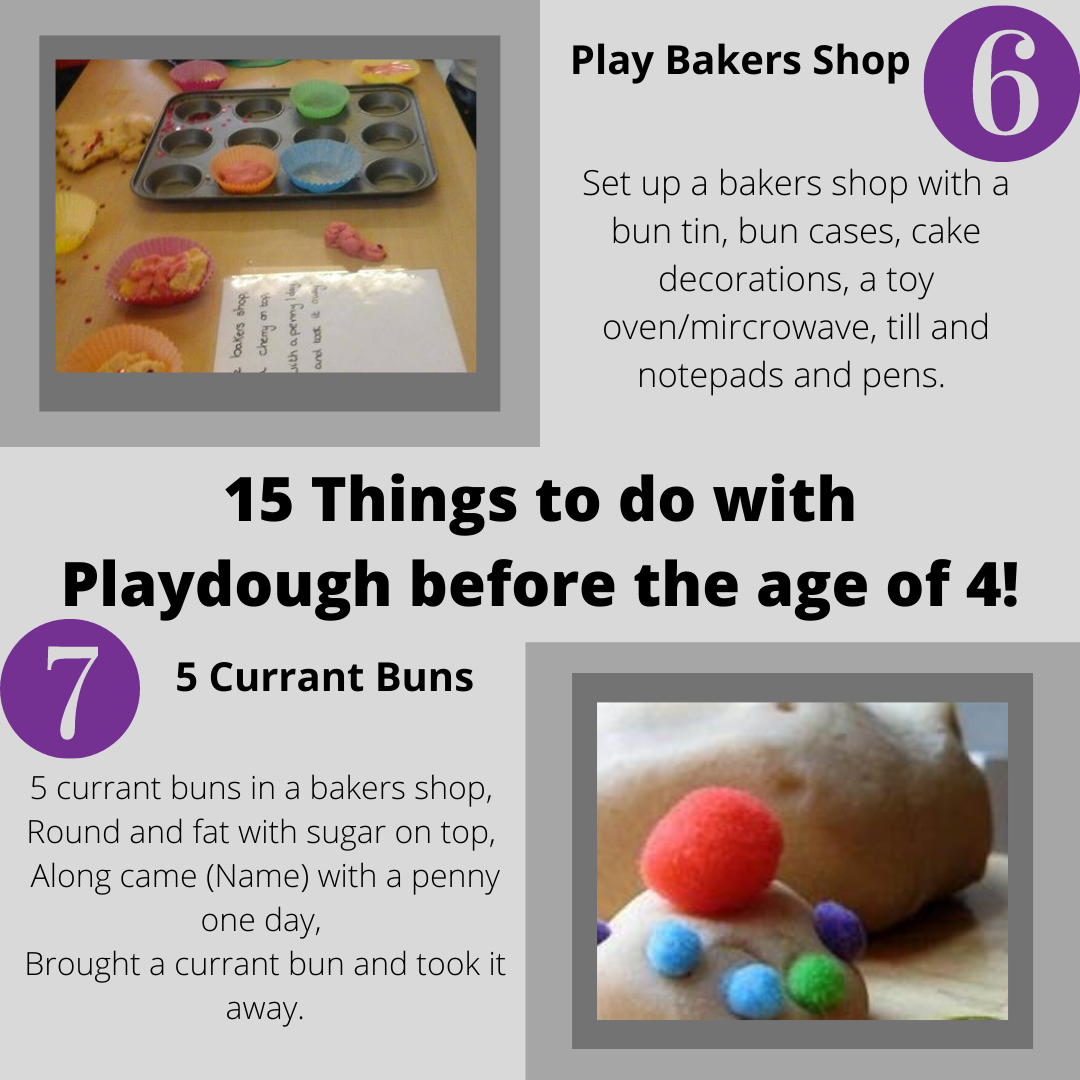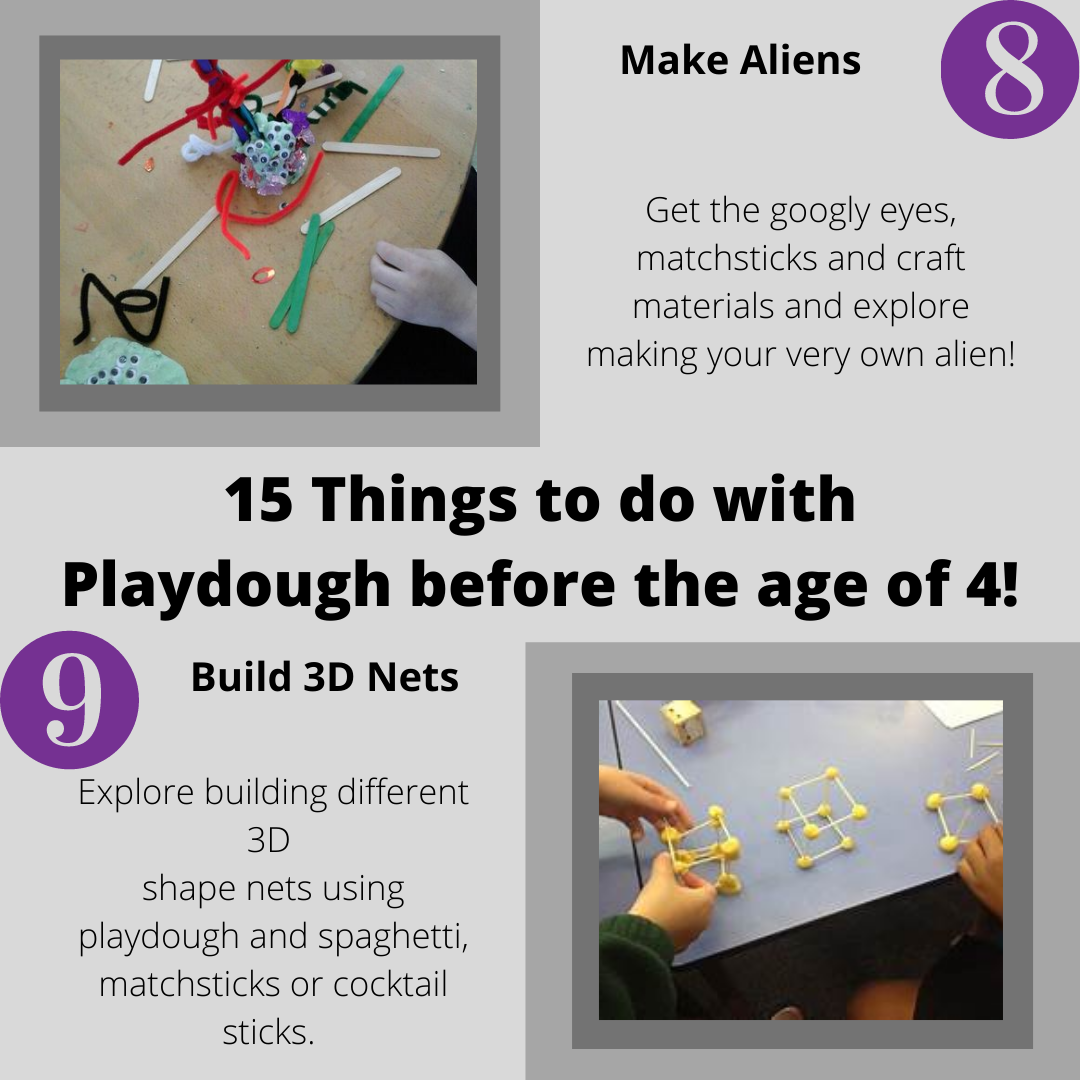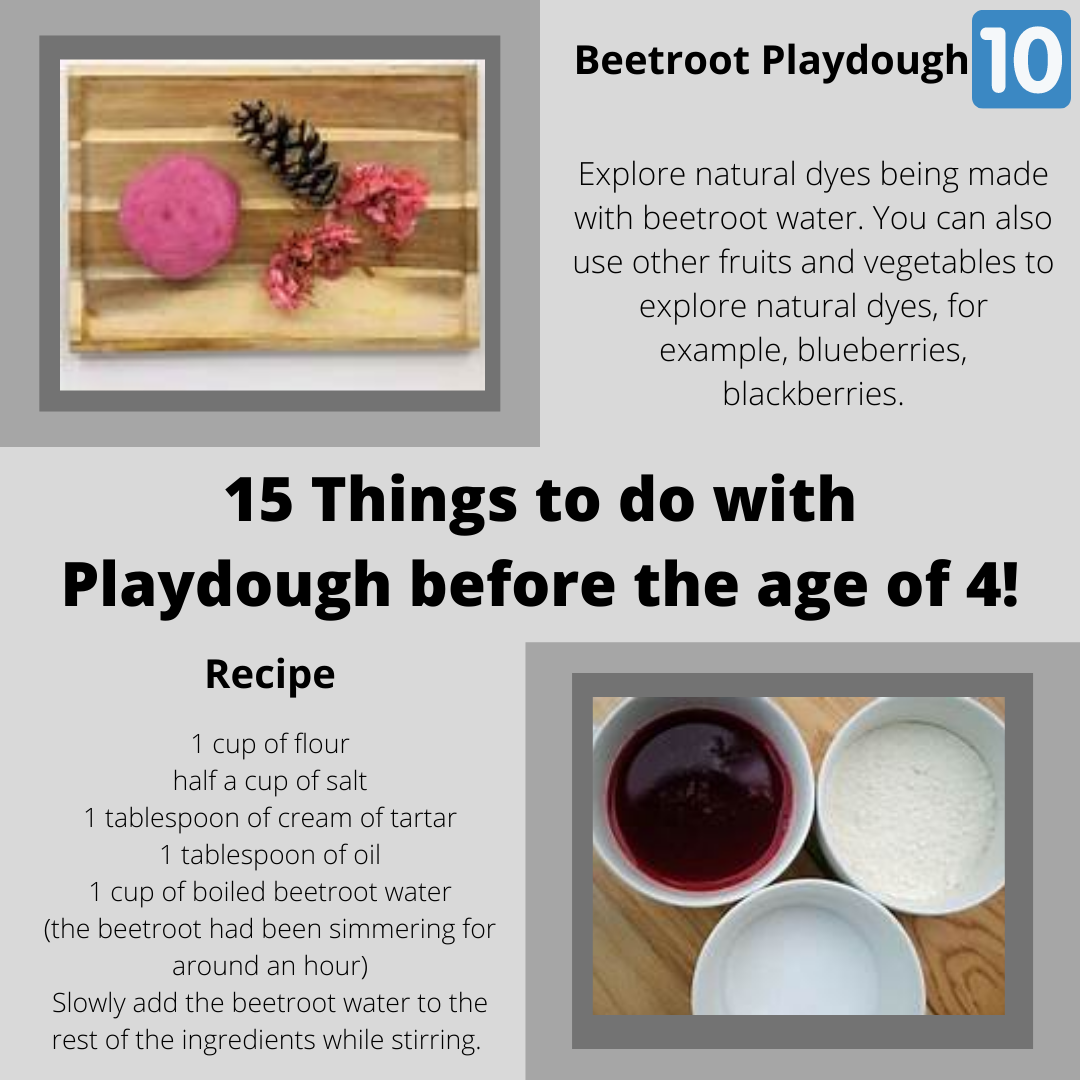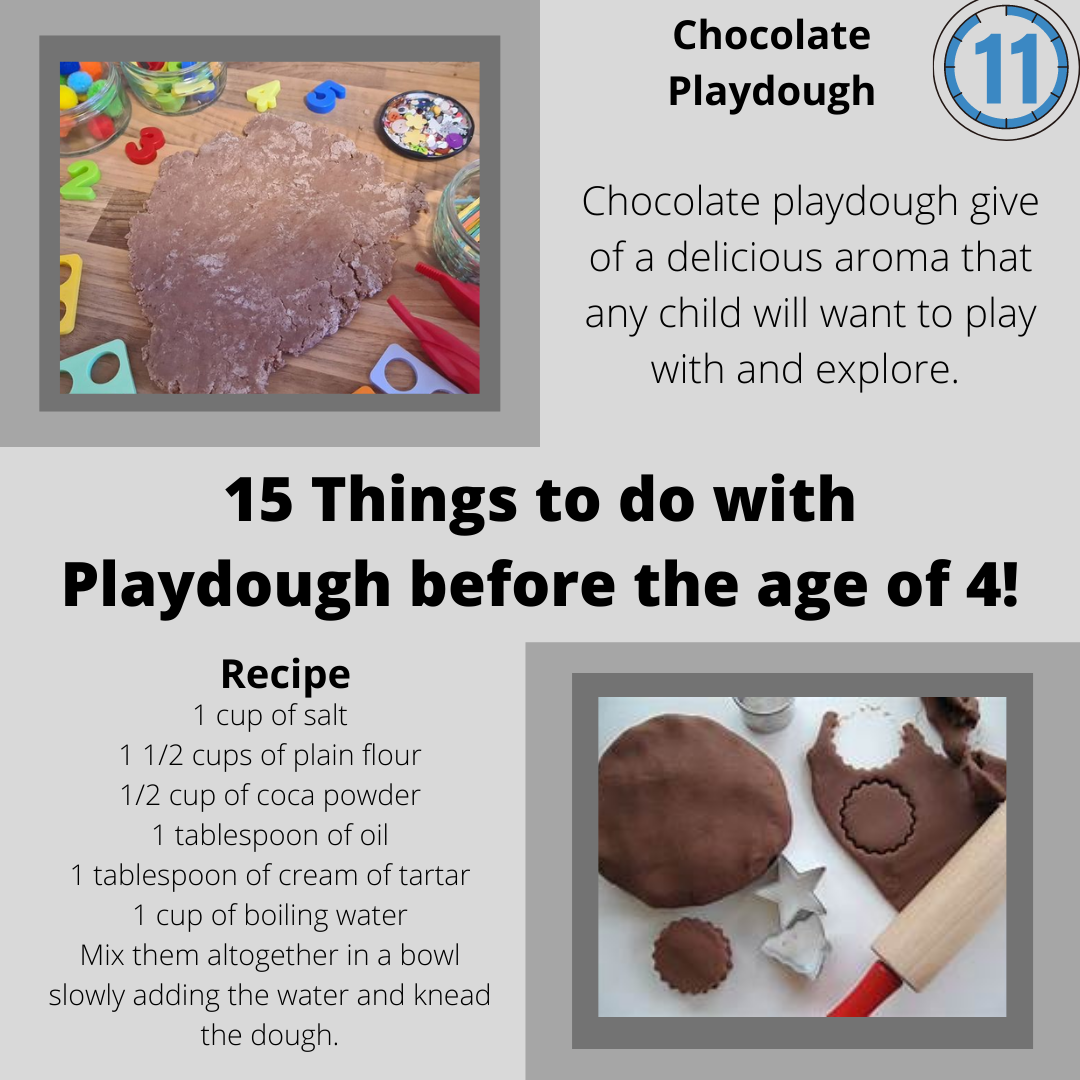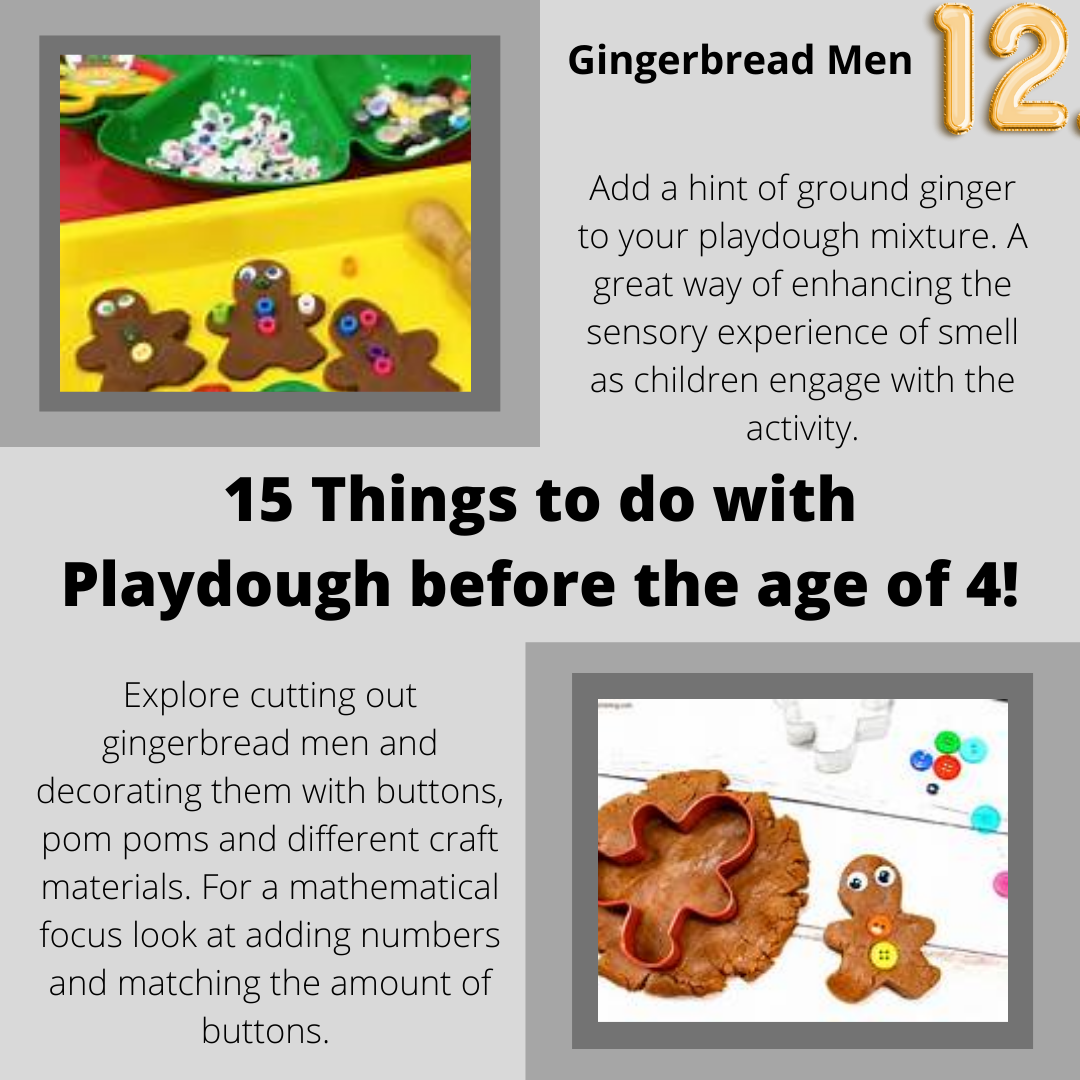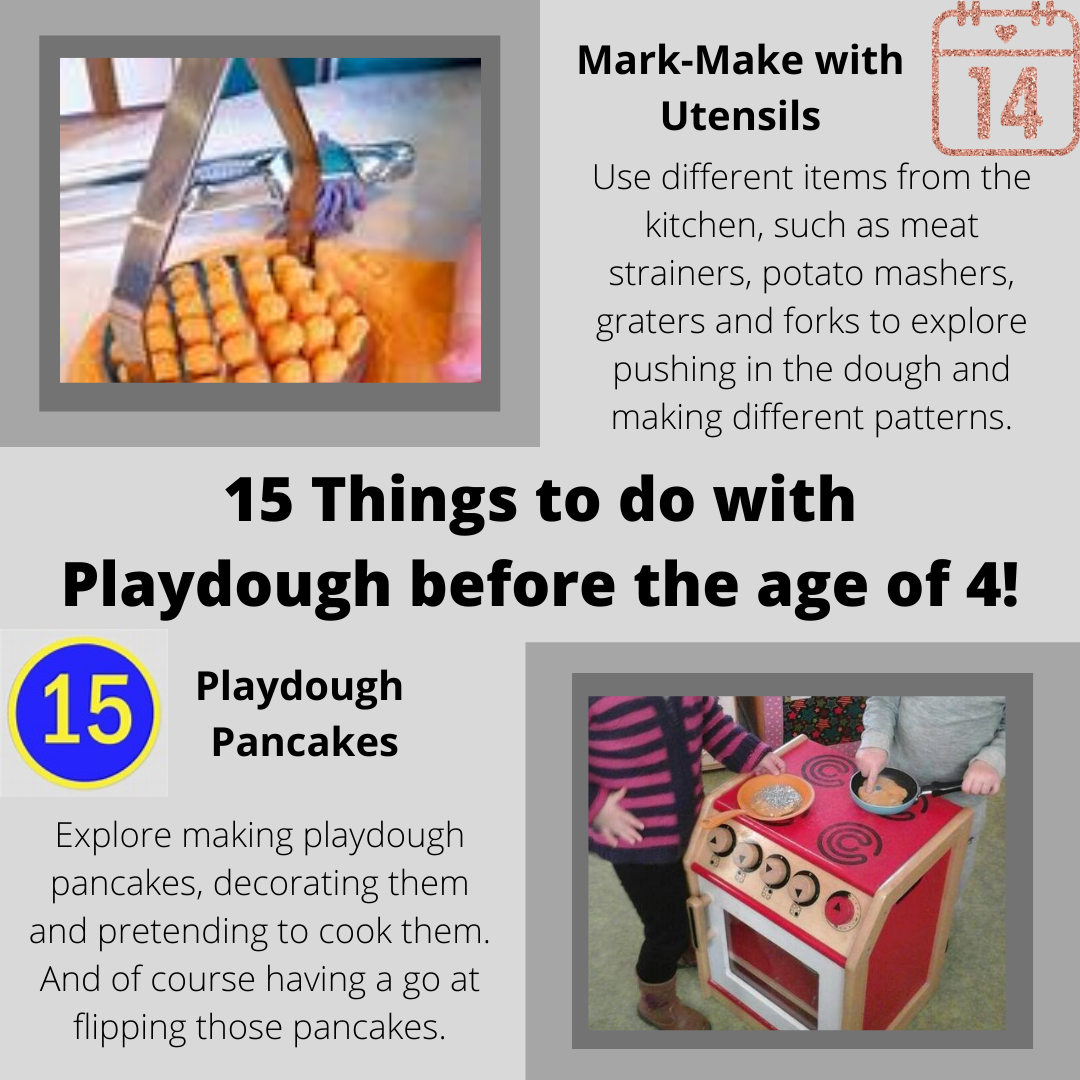15 Things To Do With Playdough Before You Are Four
Playdough is a stable part of most of our continuous provision, as part of an area on its own or perhaps within a malleable area. Not only is it a versatile resource it is an inexpensive learning resource…
Playdough is a stable part of most of our continuous provision, as part of an area on its own or perhaps within a malleable area. Not only is it a versatile resource it is an inexpensive learning resource that can be used at home or in an early year setting. Playdough can easily be used to incorporate all areas of learning and help to extend children’s interests, independence, and self-esteem.
Therefore, we have created the following 15 things to do with playdough before the age of 4 years old. A perfect mix of activities and things to start trying in storm Eunice as you batten down the hatches and stay at home. Below is my trusted playdough recipe:
Playdough Recipe:
2 cups of plain flour
1 cup of salt
1 tablespoon of cream of tartar
1 tablespoon of oil
1 cup of boiling water from the kettle
(Optional add food colouring or essential oils)
Mix all the ingredients together and then knead until you have a nice dough.
Also, if want to explore more about developing that playdough provision in your early years setting, why not check out our recent recording of ‘Extending Learning Through Your Playdough Provision’ here.
Sensory Play in Early Years Settings and Covid-19
Sensory play is an important part of children’s exploration and learning and this blog shares some ideas of supporting sensory play in the current pandemic.
Our latest blog is going to explore the importance of sensory play in the early years and the impact of Covid-19. With increasing concerns around the transmitting and sharing of Covid-19 many settings have abandoned sensory play, or limited it’s use within settings. However, we know that embracing all 8 senses within play is crucial to high quality childcare and learning opportunities for children.
Sensory play and experiences are beneficial to supporting how children make sense of the world around them, children learn through all of the senses and through the stimulation that they receive from their senses being aroused. When children’s senses are being stimulated, we know that this is promoting children’s brain development and schematic learning (the process of amending and adding new information to our understandings of the world around us). Additionally, research has suggested that sensory play and experiences helps to develop the neural pathways and connections within the brain. Also, sensory play supports children’s language and cognitive development, problem-solving, gross and fine motor skills and so much more.
Tips for providing sensory experiences and play in early years settings, while trying to minimise children and staff from being exposed to Covid-19:
· Keeping group sizes small and where possible operating in bubbles.
· Promoting plenty of handwashing in between activities.
· Rather then having large group tuff trays, have individual trays (for example, using tea trays – which can be picked up at places such as b and m or the range) with different experiences in them and individual resources. For example, children can still explore mark-making in coloured sand in their own tray, or scooping gloop (cornflour and water), or making individual trays of mood sand (baby oil and flour).
· Cleaning and disinfecting all resources between children.
· Ensure children don’t share aprons and they are disinfected or cleaned appropriately between use.
· Perhaps you could consider tying a photo or name on the smocks with string, so children can access their own apron throughout a session.
· Individual sensory bins for children, instead of sand trays or water trays. For example, each child has a plastic storage box with things in for them to use. You don’t need to bin the sand at the end of the day, you can leave it to isolate for so many hours, so if the virus is present it will die off.
· Have risk benefit assessments and risk assessments for environment to show how you have taking relevant measures to stop the spread of covid-19. This will also help for example, if you decide to not remove soft furnishings because it is calming to touch and an important sensory experience and part of your pedagogical approach and you can highlight how the benefits of providing this outweighs any potential risks or harm to children and adults.
· Individual named playdough tubs, with photos if needed.
· Making a work zone or area on the table for children to stick to either using masking tape or a tray.
· Dancing with ribbons and viols – ensure that children have their own space and their own ribbons or pieces of materials that can be washed in the washing machine afterwards.
· Dressing up – think about having individual bags of materials, scarfs, sheets, hats etc that can all be easily cleaned afterwards. Or using pillow cases that the children can mark-make on with washable markers and then pop in the washing machine.
· Using a bubble machine over individual bubble wands with children, unless you can ensure that they can have their own wand and not share them.
· Making their own instruments that they can have labelled so they are not passing instruments around.



